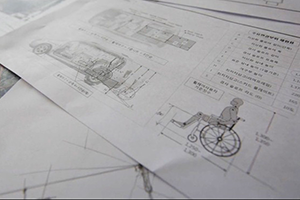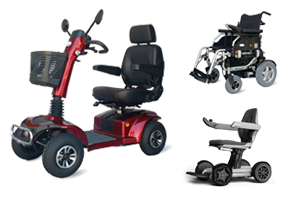See What Titration ADHD Adults Tricks The Celebs Are Using
페이지 정보

본문
ADHD Titration
Titration is a process that involves identifying the best medication at the most effective dose to manage ADHD symptoms. It requires patience and time as your healthcare professional gradually increases your dosage over a period of weeks.
 It is crucial to plan regular clinical monitoring appointments (every three months) in order to make dose adjustments based on residual symptoms and adverse effects.
It is crucial to plan regular clinical monitoring appointments (every three months) in order to make dose adjustments based on residual symptoms and adverse effects.
Medicines
Medication is usually effective in controlling symptoms of ADHD, especially when combined psychosocial treatment. Adults with ADHD are best treated with medication (Weiss, et al., 1999). Unfortunately, 20 percent people suffering from ADHD do not respond to the first treatment they test.
Medication titration adhd adults what is titration adhd a process where the doctor gradually increases dosage to determine the best balance of efficacy and side effects. It could take several weeks. A good doctor is patient enough to know the specific circumstances of each patient, including the effects of any other medications they are taking. They also assess the severity of symptoms in various situations.
Stimulants work well for the majority of adults with ADHD. They are prescribed either short or long acting; the choice is based on when the patient wants to take their medication, if they are able to take pills in liquid form or prefer to swallow them, and the cost. Long-acting stimulants have better safety record, but can have an unpleasant taste and may wear off in the middle of the day. Long-acting stimulants may also be more expensive than those shorter-acting.
The medications used to treat adult ADHD include amphetamines, methylphenidates and atomoxetine. Alongside improving ADHD symptoms, these medications can help reduce anxiety and depression in some people and may help in treating bipolar disorder, Tourette's syndrome and addiction to substances.
Methylphenidate is the most commonly prescribed and effective drug. Adderall is the most potent type of methylphenidate. However, doctors typically prescribe an equivalent generic version, Concerta, that has an excellent safety track record. Vyvanse is a long-acting stimulant from a prodrug. It is metabolized in the body to its active form. However, the FDA warns that water titration should not be used in conjunction with other stimulants with long-acting effects, like Adderall XR, Dexedrine, Mydayis, Focalin XR, or Ritalin LA.
Mood lability is the second most common adverse effect of stimulants in adults. If it's a major issue, switching to another type of medication or incorporating an anti-stimulant like Strattera may aid.
Dosage
The goal of titration is finding the appropriate dosage of medication that reduces ADHD symptoms and minimizes the risk of side adverse effects. ADHD medications work differently for different people, so finding the appropriate dosage will take time. Doctors usually begin with a small dosage and gradually increase the dosage over a period of one to three weeks. They will repeat this process until their patient is feeling the full effect of the medication and not experiencing any side effects.
The dose that is used to start the medication depends on many factors, such as previous experience with stimulant treatment such as age, height, and weight, genetic or metabolic differences, comorbid conditions and the severity of symptoms. Titration is a suitable option for any medication that is intended to treat ADHD as well as non-stimulants like Strattera and clonidine as well as Guanfacine extended release, and stimulant medications like methylphenidate or amphetamine preparations.
Stimulants are generally considered the first-line treatment option for adults with ADHD. They are extremely efficient and relatively safe. They are also available in different formulations. However, they could result in side effects like headaches or jitteriness. Patients and their families are often worried about weight loss. A significant proportion of people also use psychostimulants that are not medically prescribed, such as to boost academic or work performance or for leisure purposes ("getting high").
Titration can be used to aid in reducing the risk of these unwanted side effects by making sure that the medication is being taken at the correct dose. It can also be used to identify any potential problems with a specific formulation or to assess the effectiveness of the medication over time.
It is important to keep in mind that even though there is an increasing amount of evidence from RCTs in support of titration in individuals however, these studies were conducted at a group level, rather than at an individual level. Many physicians do not have any knowledge of titration on an individual patient basis. In the ideal scenario, long-term RCTs must be conducted to give information about the longer-term effects of pharmacotherapy in individuals with private adhd titration.
Side Effects
It can take a few weeks for someone to notice significant improvements in their symptoms after implementing stimulant ADHD medication. This is because the medication must be titrated, or adjusted, to determine the correct dosage for each individual. Doctors start with a smaller dose, and increase it gradually every few weeks until they reach their goal dosage. This is when symptoms are improved most effectively and with the least negative effects.
Titrating the medication is a necessary step since the majority of people who have previously taken stimulant medications for ADHD have developed tolerance to them, meaning that their bodies have gotten used to the drugs and will no longer respond. The process of titration is useful for those who are new to stimulant medications. It will help determine the right dose to start with.
Amphetamines, like Vyvanse and atomoxetine are stimulant medications that can be used to treat ADHD. They are typically used in conjunction with psychosocial treatments, such as cognitive behavioral therapy (CBT) which has been demonstrated to be effective in reducing ADHD symptoms, as well as comorbid disorders like anxiety and depression.
The side effects of medication could include dry mouth, trouble sleeping, and other minor, benign adverse effects. These are usually temporary and are not harmful. Patients who experience persistent, severe, or serious adverse effects should consult their doctor. The most common side effects are heart problems, manic symptoms or delusions, hallucinations, (such as hearing or seeing bugs), and agitation.
Many people who begin taking long-acting ADHD stimulants are disappointed when their initial doses fail to reduce ADHD symptoms. The good news is 80 percent of people who take two or more drugs show positive results. If the first medication does not provide enough improvement, you can titrate the dosage down or switch to nonstimulant drugs like Strattera and Qelbree.
Monitoring
During the titration phase of ADHD medication you will be adjusting your medication until it begins to improve symptoms and minimize adverse effects. The process can take between 8 and 12 weeks to complete and requires constant contact with your healthcare provider.
It is better to adjust your dosage based on consistent observations made over a long period of time instead of a single experience. This will ensure that you are receiving enough coverage from your medication and minimize the chance of tolerance.
Tolerance is one of the major issues with ADHD medications because it decreases the effectiveness of treatment. Developing strategies to reduce or prevent tolerance will require ongoing research however, a few simple actions can help reduce your risk of developing tolerance. Regularly checking in and communicating with your healthcare professionals will reduce the risk of developing tolerance. Maintaining a log of symptoms in time, and regular check-ins can aid in.
Another important factor is ensuring that you're taking your medication exactly as prescribed, as overdosing can cause adverse side effects, such as decreased appetite, sedation and anxiety. It's essential to keep track of the dosage you take every day and utilize a tool like CareClinic to log your daily dose of medication and note any patterns that could indicate the need for medication adjustment.
The process of titration adhd adults is time-consuming, but it's essential to identify the right medication and dosage for your specific requirements. It is essential to keep an open line of communication with your healthcare provider. They'll be able better understand the complexities and adjust medication accordingly.
The process of titration is a combination of science and art that is required to achieve the highest quality results for each patient. This approach is individualized and can improve the clinical outcomes, satisfaction of patients and tolerability of stimulant therapy. This is particularly important for an adult population with higher rates of comorbidities, and complications that result from discontinuation. Other individual considerations include the patient's expectations regarding dosage, efficacy health literacy, and personal priorities. The authors acknowledge financial support from the National Institute of Mental Health, Lilly, Medice, and Engelhard Arzneimittel.
Titration is a process that involves identifying the best medication at the most effective dose to manage ADHD symptoms. It requires patience and time as your healthcare professional gradually increases your dosage over a period of weeks.
 It is crucial to plan regular clinical monitoring appointments (every three months) in order to make dose adjustments based on residual symptoms and adverse effects.
It is crucial to plan regular clinical monitoring appointments (every three months) in order to make dose adjustments based on residual symptoms and adverse effects.Medicines
Medication is usually effective in controlling symptoms of ADHD, especially when combined psychosocial treatment. Adults with ADHD are best treated with medication (Weiss, et al., 1999). Unfortunately, 20 percent people suffering from ADHD do not respond to the first treatment they test.
Medication titration adhd adults what is titration adhd a process where the doctor gradually increases dosage to determine the best balance of efficacy and side effects. It could take several weeks. A good doctor is patient enough to know the specific circumstances of each patient, including the effects of any other medications they are taking. They also assess the severity of symptoms in various situations.
Stimulants work well for the majority of adults with ADHD. They are prescribed either short or long acting; the choice is based on when the patient wants to take their medication, if they are able to take pills in liquid form or prefer to swallow them, and the cost. Long-acting stimulants have better safety record, but can have an unpleasant taste and may wear off in the middle of the day. Long-acting stimulants may also be more expensive than those shorter-acting.
The medications used to treat adult ADHD include amphetamines, methylphenidates and atomoxetine. Alongside improving ADHD symptoms, these medications can help reduce anxiety and depression in some people and may help in treating bipolar disorder, Tourette's syndrome and addiction to substances.
Methylphenidate is the most commonly prescribed and effective drug. Adderall is the most potent type of methylphenidate. However, doctors typically prescribe an equivalent generic version, Concerta, that has an excellent safety track record. Vyvanse is a long-acting stimulant from a prodrug. It is metabolized in the body to its active form. However, the FDA warns that water titration should not be used in conjunction with other stimulants with long-acting effects, like Adderall XR, Dexedrine, Mydayis, Focalin XR, or Ritalin LA.
Mood lability is the second most common adverse effect of stimulants in adults. If it's a major issue, switching to another type of medication or incorporating an anti-stimulant like Strattera may aid.
Dosage
The goal of titration is finding the appropriate dosage of medication that reduces ADHD symptoms and minimizes the risk of side adverse effects. ADHD medications work differently for different people, so finding the appropriate dosage will take time. Doctors usually begin with a small dosage and gradually increase the dosage over a period of one to three weeks. They will repeat this process until their patient is feeling the full effect of the medication and not experiencing any side effects.
The dose that is used to start the medication depends on many factors, such as previous experience with stimulant treatment such as age, height, and weight, genetic or metabolic differences, comorbid conditions and the severity of symptoms. Titration is a suitable option for any medication that is intended to treat ADHD as well as non-stimulants like Strattera and clonidine as well as Guanfacine extended release, and stimulant medications like methylphenidate or amphetamine preparations.
Stimulants are generally considered the first-line treatment option for adults with ADHD. They are extremely efficient and relatively safe. They are also available in different formulations. However, they could result in side effects like headaches or jitteriness. Patients and their families are often worried about weight loss. A significant proportion of people also use psychostimulants that are not medically prescribed, such as to boost academic or work performance or for leisure purposes ("getting high").
Titration can be used to aid in reducing the risk of these unwanted side effects by making sure that the medication is being taken at the correct dose. It can also be used to identify any potential problems with a specific formulation or to assess the effectiveness of the medication over time.
It is important to keep in mind that even though there is an increasing amount of evidence from RCTs in support of titration in individuals however, these studies were conducted at a group level, rather than at an individual level. Many physicians do not have any knowledge of titration on an individual patient basis. In the ideal scenario, long-term RCTs must be conducted to give information about the longer-term effects of pharmacotherapy in individuals with private adhd titration.
Side Effects
It can take a few weeks for someone to notice significant improvements in their symptoms after implementing stimulant ADHD medication. This is because the medication must be titrated, or adjusted, to determine the correct dosage for each individual. Doctors start with a smaller dose, and increase it gradually every few weeks until they reach their goal dosage. This is when symptoms are improved most effectively and with the least negative effects.
Titrating the medication is a necessary step since the majority of people who have previously taken stimulant medications for ADHD have developed tolerance to them, meaning that their bodies have gotten used to the drugs and will no longer respond. The process of titration is useful for those who are new to stimulant medications. It will help determine the right dose to start with.
Amphetamines, like Vyvanse and atomoxetine are stimulant medications that can be used to treat ADHD. They are typically used in conjunction with psychosocial treatments, such as cognitive behavioral therapy (CBT) which has been demonstrated to be effective in reducing ADHD symptoms, as well as comorbid disorders like anxiety and depression.
The side effects of medication could include dry mouth, trouble sleeping, and other minor, benign adverse effects. These are usually temporary and are not harmful. Patients who experience persistent, severe, or serious adverse effects should consult their doctor. The most common side effects are heart problems, manic symptoms or delusions, hallucinations, (such as hearing or seeing bugs), and agitation.
Many people who begin taking long-acting ADHD stimulants are disappointed when their initial doses fail to reduce ADHD symptoms. The good news is 80 percent of people who take two or more drugs show positive results. If the first medication does not provide enough improvement, you can titrate the dosage down or switch to nonstimulant drugs like Strattera and Qelbree.
Monitoring
During the titration phase of ADHD medication you will be adjusting your medication until it begins to improve symptoms and minimize adverse effects. The process can take between 8 and 12 weeks to complete and requires constant contact with your healthcare provider.
It is better to adjust your dosage based on consistent observations made over a long period of time instead of a single experience. This will ensure that you are receiving enough coverage from your medication and minimize the chance of tolerance.
Tolerance is one of the major issues with ADHD medications because it decreases the effectiveness of treatment. Developing strategies to reduce or prevent tolerance will require ongoing research however, a few simple actions can help reduce your risk of developing tolerance. Regularly checking in and communicating with your healthcare professionals will reduce the risk of developing tolerance. Maintaining a log of symptoms in time, and regular check-ins can aid in.
Another important factor is ensuring that you're taking your medication exactly as prescribed, as overdosing can cause adverse side effects, such as decreased appetite, sedation and anxiety. It's essential to keep track of the dosage you take every day and utilize a tool like CareClinic to log your daily dose of medication and note any patterns that could indicate the need for medication adjustment.
The process of titration adhd adults is time-consuming, but it's essential to identify the right medication and dosage for your specific requirements. It is essential to keep an open line of communication with your healthcare provider. They'll be able better understand the complexities and adjust medication accordingly.
The process of titration is a combination of science and art that is required to achieve the highest quality results for each patient. This approach is individualized and can improve the clinical outcomes, satisfaction of patients and tolerability of stimulant therapy. This is particularly important for an adult population with higher rates of comorbidities, and complications that result from discontinuation. Other individual considerations include the patient's expectations regarding dosage, efficacy health literacy, and personal priorities. The authors acknowledge financial support from the National Institute of Mental Health, Lilly, Medice, and Engelhard Arzneimittel.
- 이전글Buggy Single Tools To Ease Your Daily Life Buggy Single Trick Every Individual Should Know 24.09.14
- 다음글15 Amazing Facts About Single Pushchair Sale The Words You've Never Learned 24.09.14
댓글목록
등록된 댓글이 없습니다.





